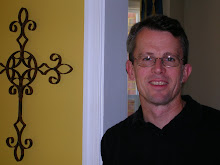Big History -- FPC sermon excerpt
It’s the beginning of time. 13.7 billion years ago. The Big Bang. God says, “Let there be light,” and there is light (Genesis 1:3). The universe suddenly appears, growing from size of an atom to size of a galaxy. All in the fraction of a second.
10 billion years ago. At the center of a supernova, hydrogen atoms and helium atoms fuse. Together, they create the building blocks of the physical world.
4.6 billion years ago. A cloud of matter collapses, and produces a star — our Sun. Earth and the other planets in our solar system form out of the bits of matter swirling around the new star.
67 million years ago. An asteroid collides with the Earth, wiping out the dinosaurs. Territory is now open for the rise of the early mammals.
80,000 years ago. A species of ape-like creatures begins to move out of Africa and into Asia.
Today, the descendents of those creatures live in nearly every part of the Earth. I’m talking about us — homo sapiens, human beings! We fly through the air in planes, communicate around the world via the Internet, develop theories about the creation of the universe, and worship the God who created us.
We are just one part of God’s Big History.
A historian named David Christian teaches a unique course called “Big History: The Big Bang, Life on Earth, and the Rise of Humanity.” It is a class that looks at human history in the context of the many histories that surround it. A review of the 13.7 billion years since the dawn of creation can remind us of how human history is just a small part of the story of what God has been doing throughout the universe.
The writer of Psalm 19 understands this, which is why she begins with the words, “The heavens are telling the glory of God; and the firmament proclaims his handiwork” (v. 1). This ancient poet looked up into the heavens, and saw the handiwork of God in the sun and moon, the stars and the planets.
My father felt the same way, through his forty years of working for NASA. He looked into space and saw beauty and order, not emptiness and chaos. That is why my family attached this Scripture verse to an observatory and a telescope, given in his memory to our presbytery’s Camp Meadowkirk.
“The heavens are telling the glory of God.” We want children to look at the planets and the stars and see the handiwork of their Creator, the result of billions of years of work.
This is big. Big History.
10 billion years ago. At the center of a supernova, hydrogen atoms and helium atoms fuse. Together, they create the building blocks of the physical world.
4.6 billion years ago. A cloud of matter collapses, and produces a star — our Sun. Earth and the other planets in our solar system form out of the bits of matter swirling around the new star.
67 million years ago. An asteroid collides with the Earth, wiping out the dinosaurs. Territory is now open for the rise of the early mammals.
80,000 years ago. A species of ape-like creatures begins to move out of Africa and into Asia.
Today, the descendents of those creatures live in nearly every part of the Earth. I’m talking about us — homo sapiens, human beings! We fly through the air in planes, communicate around the world via the Internet, develop theories about the creation of the universe, and worship the God who created us.
We are just one part of God’s Big History.
A historian named David Christian teaches a unique course called “Big History: The Big Bang, Life on Earth, and the Rise of Humanity.” It is a class that looks at human history in the context of the many histories that surround it. A review of the 13.7 billion years since the dawn of creation can remind us of how human history is just a small part of the story of what God has been doing throughout the universe.
The writer of Psalm 19 understands this, which is why she begins with the words, “The heavens are telling the glory of God; and the firmament proclaims his handiwork” (v. 1). This ancient poet looked up into the heavens, and saw the handiwork of God in the sun and moon, the stars and the planets.
My father felt the same way, through his forty years of working for NASA. He looked into space and saw beauty and order, not emptiness and chaos. That is why my family attached this Scripture verse to an observatory and a telescope, given in his memory to our presbytery’s Camp Meadowkirk.
“The heavens are telling the glory of God.” We want children to look at the planets and the stars and see the handiwork of their Creator, the result of billions of years of work.
This is big. Big History.


0 Comments:
Post a Comment
<< Home